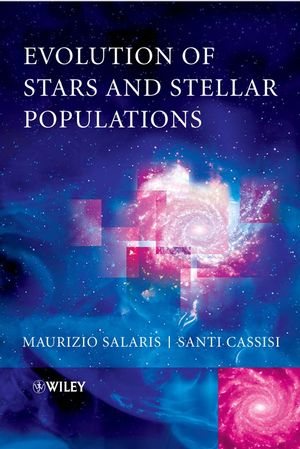Evolution of Stars and Stellar PopulationsISBN: 978-0-470-09220-0
Paperback
400 pages
December 2005
 This is a Print-on-Demand title. It will be printed specifically to fill your order. Please allow an additional 10-15 days delivery time. The book is not returnable.
|
||||||
1. Stars and the Universe.
1.1Setting the stage.
1.2 Cosmic Kinematics.
1.3 Cosmic Dynamics.
1.4 Particles - and nucleosynthesis.
1.5 CMB fluctuations and structure formation.
1.6 Cosmological Parameters.
1.7 The inflationary Paradigm.
1.8 The role of Stellar Evolution.
2. Equation of State of the Stellar Matter.
2.1 Physical conditions of the stellar matter.
3. Equations of Stellar Structure.
3.1 Basic assumptions[.
3.2 Method of solution of the stellar structure equations.
3.3 Non-standard physical process.
4. Star Formation and Evolution.
4.1 Overall picture of stellar evolution.
4.2 Star formation.
4.3 Evolution along the Hayashi track.
5. The Hydrogen Burning Phase.
5.1 Overview.
5.2 The nuclear reactions.
5.3 The central H-burning phase in low main sequence stars.
5.4 The central H-burning phase in upper main sequence stars.
5.5 The dependence of MS tracks on chemical composition and convection efficiency.
5.6 Very low-mass stars.
5.7 The mass - Luminosity relations.
5.8 The Schonberg-Chandrasekhar limit.
5.9 Post-main sequence evolution.
5.10 Dependence of the main RGB features of physical and chemical parameters.
5.11 Evolutionary properties of very metal-poor stars.
6. The Helium Burning Phase.
6.1 Introduction.
6.2 The nuclear reactions.
6.3 The zero age horizontal branch.
6.4 The core He-burning phase in low mass stars.
6.5 The central He-burning phase in more massive stars.
6.6 Pulsational properties of core He-burning stars.
7. The Advanced Evolutionary Phase.
7.1 Introduction.
7.2 The asymptotic giant branch.
7.3 The Chandrasekhar limit and the evolution of stars with large CO cores.
7.4 carbon-oxygen white dwarfs.
7.5 The advanced evolutionary stages of massive stars.
7.6 Type la supernovae.
7.7 Neutron stars.
7.8 Black holes.
8. From Theory to Observations.
8.1 Spectroscopic notation of the stellar chemical composition.
8.2 From stellar models to observed spectra and magnitudes.
8.3 The effect of interstellar extinction.
8.4 K-correction for high red-shift objects.
8.5 Some general comments about colour-magnitude-diagrams.
9. Simple Stellar Populations.
9.1 Theoretical isochrones.
9.2 Old simple stellar populations.
9.3 Young simple stellar populations.
10. Unresolved Stellar Populations.
10.1 Definition and problems.
10.2 Determination of the star formation history.
10.3 Distance indicators.
11. Unresolved Stellar Populations.
11.1 Simple stellar populations.
11.2 Composite stellar populations.
11.3 Distance to unresolved stellar populations.
Appendix I: Constants.
Appendix II: Selected Web Sites.
References.
Index.



